Alaska Wildlife Conservation Center
Brown Bears out of Hibernation
27/04/17 13:35 Filed in: Alaska Wildlife
Lynx
03/09/11 16:17 Filed in: Alaska Wildlife
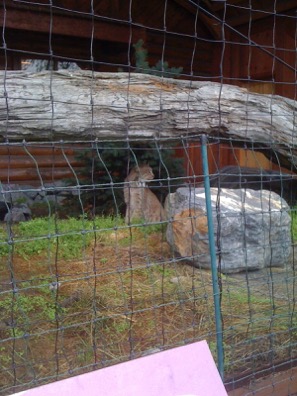
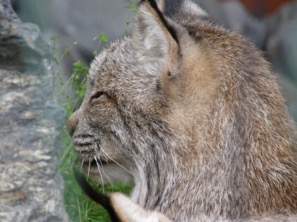
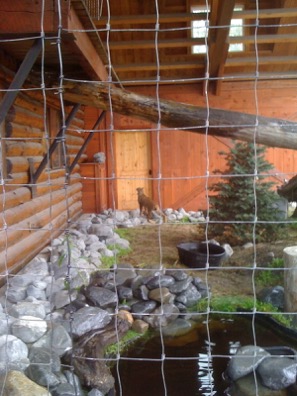
”Is anybody going to come and feed us....ever?”
Finally, the lynx have arrived at the Alaska Wildlife Conservation Center! The two females were housed at the Alaska Zoo for the last five years. Lynx are the only felines to inhabit Alaska. They are illusive animals in the wild, but at the center, they are up front for all to enjoy. I have only seen lynx in the wild three times in the 36 years I’ve been traveling in the north.
Lynx are short-tailed and clearly distinguishable by the long tufts on the tips of their ears, so they look like a huge bob cat. Their monster paws allow them to navigate in deep snow. I love the quality of their dense fur which is a soft buff with a lot of dimension, making them quite colorful. These females weigh in at about 25 pounds.
They are playful and seem to enjoy hanging out in the high, open loft where they can survey their domain and look in the window to check out the action inside the gift shop from above.
More Kodiak Bear Cubs
09/08/11 12:23 Filed in: Alaska Wildlife
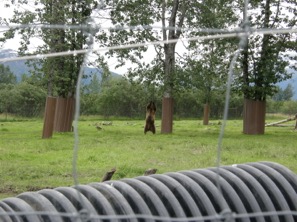
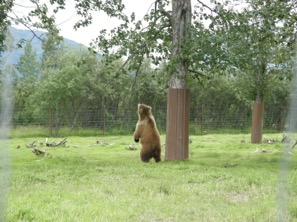
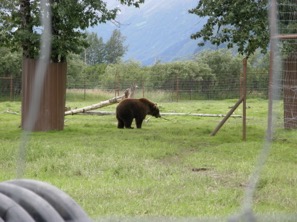
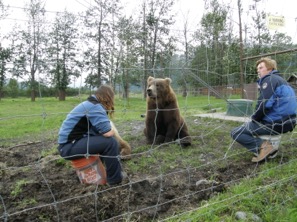
I managed to get a few more photos of the brown bear cubs yesterday at the Alaska Wildlife Conservation Center. Shaguyik wanted the tree branch while Taquoka didn’t seem sure about what she was up to. Erin and Scott are work with them when Jordan is away on business to keep their minds active. They are throwing the bears handfuls of dog food which offers them good, balanced nutrition. Honestly, we can see them growing week by week.
Alaska Wildlife - Mukluk the Musk Ox finds her home
13/06/11 18:31 Filed in: Alaska Wildlife
 Mukluk being fed at about 3 months of age.
Mukluk being fed at about 3 months of age. Every year Alaskan visitors enjoy the new spring babies at the Alaska Wildlife Conservation Center. The caribou, musk ox, elk, and wood bison all gave birth in the last month.
The center was originally established for the preservation of the wood bison but evolved into a center dedicated to the care or orphaned and injured animals and providing wildlife awareness and education and Alaska’s most visited attraction. Now covering 200 acres, 15 habitats are home to well over 80 animals including brown and black bears, moose, musk-oxen, caribou, coyotes, elk, and birds of prey in addition to the wood bison.
In June 2010, an orphaned baby musk ox named Mukluk was brought to the center. Her mother was killed by a grizzly bear in defense of her life. Oilfield workers found her, contacted Alaska Fish & Game who brought the little one to AWCC. When I first saw her I thought she was a bear, but nothing was right about that, not the color, shape or fur quality. I was delighted to find out she was a musk ox and it has been such a joy watching her grow.
Mukluk was eventually placed in an enclosure across the road from the main herd and initially they showed interest in her, but she showed none in them. That she is bigger, stronger and has sprouted her horn nubs, the decision was made to move her in with the herd.
So, just last week she was moved over. Everyone was so nervous because she had been hand raised and we all wanted to protect her. We humans were convinced she did not know she was a musk ox. Would they accept her or charge her? Would she stand by the fence not wanting to go? What was going to happen? But when she was put into the large enclosure, she took off confidently, just like she knew what she was doing. After a short encounter with Slide, the main male, when she nibbled on his horns, all was well. Now she is happily doing what musk ox do, being a part of a herd.
